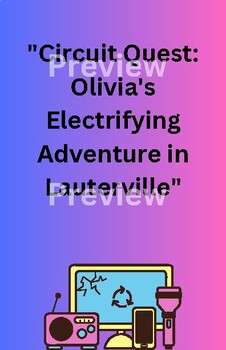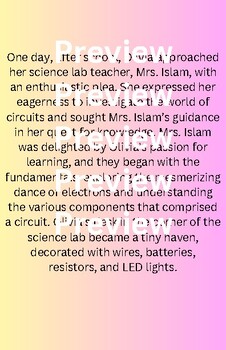Electrical Circuits: Energy and Short story
- PDF
Description
Great for individual or group reading (station) and intro for circuits.
This is a well-crafted story for 3rd-5th grade students. The narrative introduces a relatable protagonist, Olivia, who demonstrates enthusiasm and determination in pursuing her interest in circuits and electricity. Questions are at the end of the reading!
The story also incorporates positive relationships with family and teachers, emphasizing the support Olivia receives from her older brother, Mrs. West, and Mrs. Islam. This highlights the importance of mentorship and encouragement in the learning process, which can be inspiring for young readers.
The progression of Olivia's journey, from asking questions to conducting experiments and eventually showcasing her knowledge at the science fair, provides a clear and exciting narrative arc. The inclusion of Olivia's classmates joining in the exploration of circuits adds a communal and collaborative aspect to the story, reinforcing the idea that learning can be a shared adventure.
The story concludes with a sense of accomplishment and leaves room for future exploration and discovery. Overall, it's a positive and uplifting tale that combines educational elements with a relatable and enthusiastic protagonist, making it suitable for 3rd-5th grade students with research and questions at the end.





